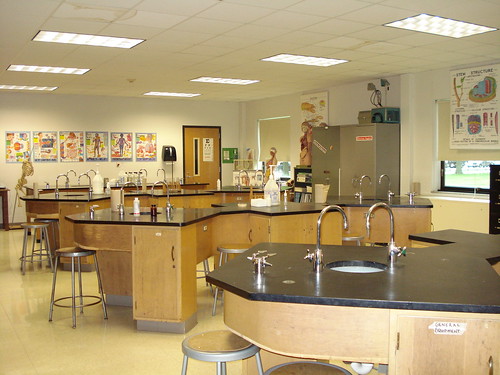Lab management
By Mary Bigelow
Posted on 2014-01-29
 My colleague and I are early–career science teachers at a middle school. Rather than our reinventing the wheel, do you have any suggestions how to make lab days run more smoothly, especially at the beginning and end of the class?
My colleague and I are early–career science teachers at a middle school. Rather than our reinventing the wheel, do you have any suggestions how to make lab days run more smoothly, especially at the beginning and end of the class?
–Sean, Oakland, California
To ensure lab periods run smoothly (and safely), planning and preparation are essential. Every activity should relate to your learning goals and be appropriate for your students’ experience level.
Review the activities or investigations thoroughly to determine if you have the proper facilities, time, and materials to conduct them safely. Put yourself in the role of a student. What could possibly go wrong? How much guidance and support will students need? Never have the students perform a procedure that you have not tried or are familiar with yourself.
Plan activities for the amount of time you have. If you have a single period, choose investigations that can be completed (including the introduction and cleanup) within that time or that can be paused and continued at another time.
Assemble materials and equipment in advance. Have extra supplies on hand, so you don’t have to leave the room to get something. Assemble trays or boxes with materials for each group (I numbered the boxes to match each team). An “inventory” card in the box or note on board helps students know what should be in the box. Assign a student on each team the role of equipment manager to get the materials and alert the teacher if anything is missing.
Prepare students for the activity by reviewing the purpose, procedures, and safety issues. If students designed the procedure, check their ideas by having them show you their proposal before they start.
Monitor your students as they work. In addition to looking for safety issues or off-task behaviors, this is an opportunity for formative assessment. You can ask or answer questions, guide their thinking, and eavesdrop on their conversations as they work. You can have a list of lab skills and check off students as they demonstrate them. Also note anything you want to change for the next class or the next time you do this activity.
Even your best class can run into difficulties. Never leave the room or be distracted with emails or phone calls while students are doing an activity. Accidents can and do happen, but you don’t want students to hide broken glass or clean up a spill with a sleeve. Deal with the situation right away in a matter-of-fact style.
If a student is engaging in potentially dangerous behavior and does not respond to your guidelines, remove him/her from the situation immediately, stopping the entire class if necessary.
Time flies during an activity, and if the bell rings while students are still working, they’ll want to rush on to their next class. Students must assume responsibility for cleaning up at the end of the period so everything is in place for the next class. Set an alarm or timer so there’s enough time to clean the workstations and debrief on the activity.
Have a sign at each lab station with a list of cleanup tasks. The equipment manager on each team should make sure group members complete tasks such as returning the materials to the boxes, wiping the tabletop, cleaning the glassware, turning off or resetting probes and other instruments, discarding any trash in the proper receptacle, and following other directions you may have (such as sterilizing and storing eyewear).
Boxes should be returned to a designated place where you can see the contents. Pay attention to forceps, calculators, scissors, and other items that may “disappear.” Note if anything is broken. Establish a routine in which students wait until you are satisfied things are in order for the next class before leaving. (This should be the routine on non-lab days, too!)
At the end of the day, return materials and equipment to their proper places if the activity is completed. If you’re continuing the activity, put the boxes in a secure place. Annotate your lesson plan with any concerns or ideas for next time. Update the inventory with how much of a material was used or if anything was broken or discarded.
This was an area in which I struggled at first. But with organizational strategies and routines, I found lab days were enjoyable and challenging for both the students and the teacher!
Photo: http://www.flickr.com/photos/40964293@N07/4018106328/
Disclaimer: The views expressed in this blog post are those of the author(s) and do not necessarily reflect the official position of the National Science Teaching Association (NSTA).

